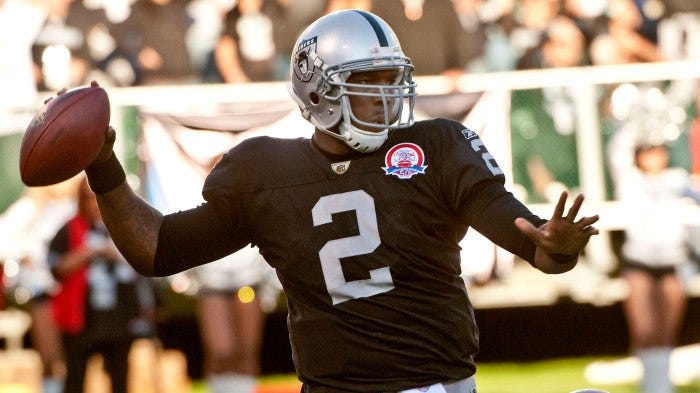
As a tech CFO, pricing is one of the most difficult undertakings I’ve personally wrestled with.
The journey to price optimization is complex, but you don’t have to navigate it alone.
BlueRocket’s pricing experts have all operated companies before. And they’ve used that hands-on experience to help companies like Salesforce, Gitlab, Brex, Zendesk, and Google optimize their pricing.
Readers of this newsletter get a pricing conversation with BlueRocket’s CEO Jason Kap.

At a recent happy hour in San Fran I found myself saddled up to the bar talking M&A and corporate development with two CFOs.
“If less than half of your deals fail, you’re probably not taking enough risk”
Whoah.
Now, I once knew a CFO who told me
“If you aren’t missing at least 10% of your flights, you’re spending too much time in airports.”
But this was next level justification (and a lot more costly).
There’s certainly a power law dynamic at play when it comes to venture capital investing – one investment puts the rest of the fund on it’s back (cue the Greg Jennings reference, IYKYK).

But in corporate M&A? Aren’t those transactions done with synergies in mind? Aren’t strategics supposed to be more risk averse compared to financial sponsors? What happened to the tried and true “string of pearls” strategy, making smaller, incremental bets that won’t break the business?
If a corporation makes a bad investment, let’s say it shells out $500M for a dud, the loss is actually much more. The floor is not $500M – it’s harder to quantify – but absolutely higher.
You have to consider:
-
Cost of capital:
-
If the acquisition is done with debt, you can figure out pretty simply what you are paying. Servicing debt ain’t cheap these days.
-
For hypergrowth companies, the greatest currency they have is their own equity, and the fees are paid via dilution.
-
-
Opportunity cost
-
Whether you use debt or equity, there’s only so much to go around (unless you got that UAE money, lol).
-
Choosing to do one thing is essentially choosing to not do something else (even if you don’t know what that “something else” is yet)
-
-
Tech debt
-
Tech debt is like the cholesteryl in the arteries of startups
-
It can take years to get healthy again, and fix a jacked up road map
-
-
Bandwidth drain
-
The cost of distracting your top engineers to integrate something into your existing roadmap, and at the expense of something else that could actually make money NOW, is huge if your market is competitive.
-
And the cost of distracting your CMO to push this “new” thing, and incentivizing your CRO to sell it, pulls focus away from your main thing, which is ostensibly subsidizing everything else.
-

BUT…
With all that said, how do you know if you are taking enough shots on goal?
How do you know the proper amount of risk to lean into when it comes to M&A?
The appetite for taking risks changes as the org gets bigger and can absorb shocks, as M&A is inherently riskier to smaller orgs. At its core, this is a discussion of risk orientation.
I’ve heard of some corporations budgeting for M&A like t shirt sizes each year. They may say, hypothetically, next year we’ve reserved the following Risk Capital:
-
Small: $5M
-
Medium: $20M
-
Large: $100M
-
XL: $500M
I’ve written extensively on the reasons for doing M&A. The elephant in the room is where you are in your innovation cycle – are you still able to consistently produce market leading products in-house, or have you become a mature organization that’s chosen to layer on tangential technologies inorganically to your platform?
As most bar conversations do, the discussion inevitably led to sports analogies.
“44% of quarterbacks taken in the first round end up being disappointments. M&A might be the same way.”
For all the data we have on athletic specimens – thousands of hours of game tape, rigorous psychological tests, and even hand measurements – we are still precisely imprecise when it comes to picking a good quarterback.
But when you get a generational QB, it’s franchise altering.

The same can be said for acquisitions. Facebook (Meta) acquired Instagram for $1 billion, which seemed ludicrous at the time. Twelve years later it’s revenue is rumored to approach $40 billion dollars, meaning it would probably be worth at least $200 billion on it’s own. And WhatsApp, purchased for $19B, is probably worth over $100 billion.
Let’s look at Google as a case study:
-
Google Wins
-
YouTube in 2006 for $1.65 billion, and is probably worth $300 to $500 billion currently
-
Android in 2009 for $50 million, and is now the leading cell operating system globally (yes, more people than iOS)
-
DeepMind in 2014 for $500 million
-
Waze in 2013 for $1.3 billion
-
-
Google Losses
-
Motorola Mobility in 20212 for $12 billion
-
Nest Labs in 2014 for $3.2B
-
Boston Dynamics in 2013 for a rumored $500M
-
If you do the back of the envelope math, Google’s wins of just YouTube, Android, DeepMind, and Waze are worth over 1/2 a trillion in market value.
And just these four Justin Herberts / Josh Allens / Pat Mahomes / Lamar Jackson’s are worth +10x the Blake Bortles / Josh Rosens / Ryan Leafs / Johnny Manziels of the world.
Marc Benioff at Salesforce is famous for being “risk on” when it comes to acquisitions. He will take a QB in the first round every year if it means he can change the franchise’s trajectory. Sometimes you get yourself a Jamarcus Russell along the way. But you also wouldn’t have picked up a Slack or Tableau.
The jury is still out on if Salesforce’s recent acquisition of Own will prove to be a worthy use of $1.9 billion. But one thing’s for sure – they’re going to throw the damn ball down field.
I sat down with the real life Wendy Rhodes to discuss frameworks for high achievers. Dr. Julie Gurner is the writer behind the ultra popular business newsletter
. We touched on:
-
How to improve your positive self talk to achieve your goals
-
How the universe conspires in your favor when you go all in on a pursuit
-
Why boring is a moat
-
The art of saying no gracefully
Out of the 100 (!?!) episodes I’ve done so far, this is one of the most powerful.
“Put simply: you perform best when you are in the mix. In fact, being slightly behind but still being in the mix may be even better than being ahead. A study on more than 45,000 NCAA basketball games found that teams behind by one point at halftime win more often than teams that are slightly ahead.”
The Paradox of Competition by The Growth EQ




